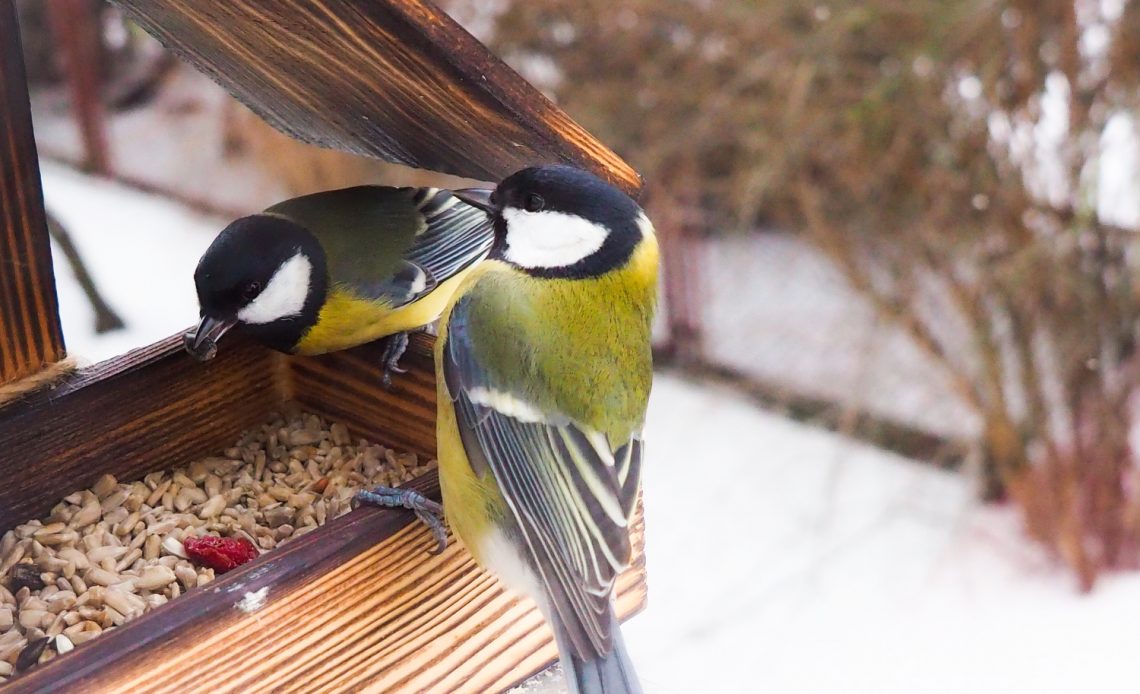

We’re here to help! Wild Yards is a completely free website that is 100% dedicated to helping you create a wildlife-friendly, sustainable yard. Read more
WildYards is reader-supported. When you buy a product through a link on our site, we may earn a comission. Every product is independently selected by our (obsessive) editors and our reviews are unbiased and objective. Read more about our mission or our privacy policy.
Installing a bird feeder in your backyard is a great way to attract local songbirds. Nuts and seeds are chock full of fats, proteins, and valuable nutrients that help keep birds healthy. But birds can’t live on nuts and seeds alone. They rely on vegetation and fruits to round out their diets. Birds are especially fond of small, sweet treats, including berries. Blackberries, raspberries, and blueberries are enough to tempt any bird. But can birds eat strawberries, too?
Yes, birds can eat strawberries. In fact, they love them! Slice a handful of fresh strawberries and leave them out in a small dish where your neighborhood birds are sure to find them. Strawberries are a nutritious snack that will help keep your flock hydrated and healthy.
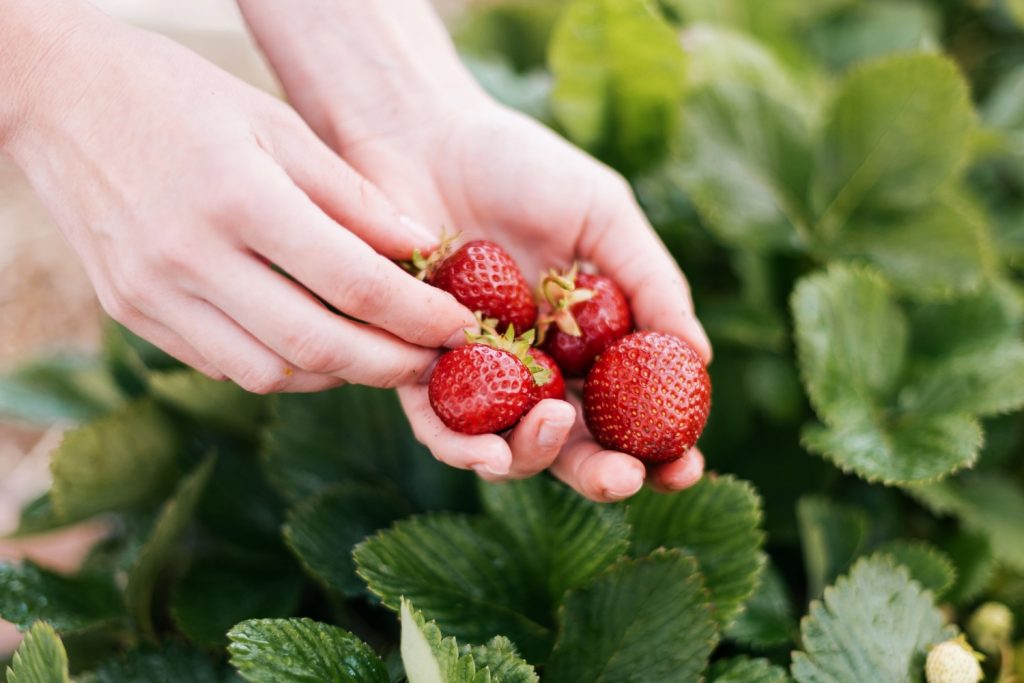
Are strawberries safe for birds to eat?
If you have a few extra strawberries left over in your refrigerator, it’s perfectly safe to set them out for the birds to enjoy. Birds love the sweet, juicy taste of fresh strawberries and like to busy themselves by picking out the seeds. Leaving a few strawberries out is also a great way to bring more pollinators to your backyard. Butterflies and other nectar-loving insects are drawn to the sweet smell of strawberries, too.
Strawberries are a healthy treat for birds. However, there are some foods that, while they are safe for humans to consume, can be harmful to avians. Chocolate, for instance, can lead to vomiting and diarrhea in birds. And feeding birds avocados can result in heart failure. So it’s always smart to check before offering birds a certain food, just to make sure it’s something that’s safe for them to eat.
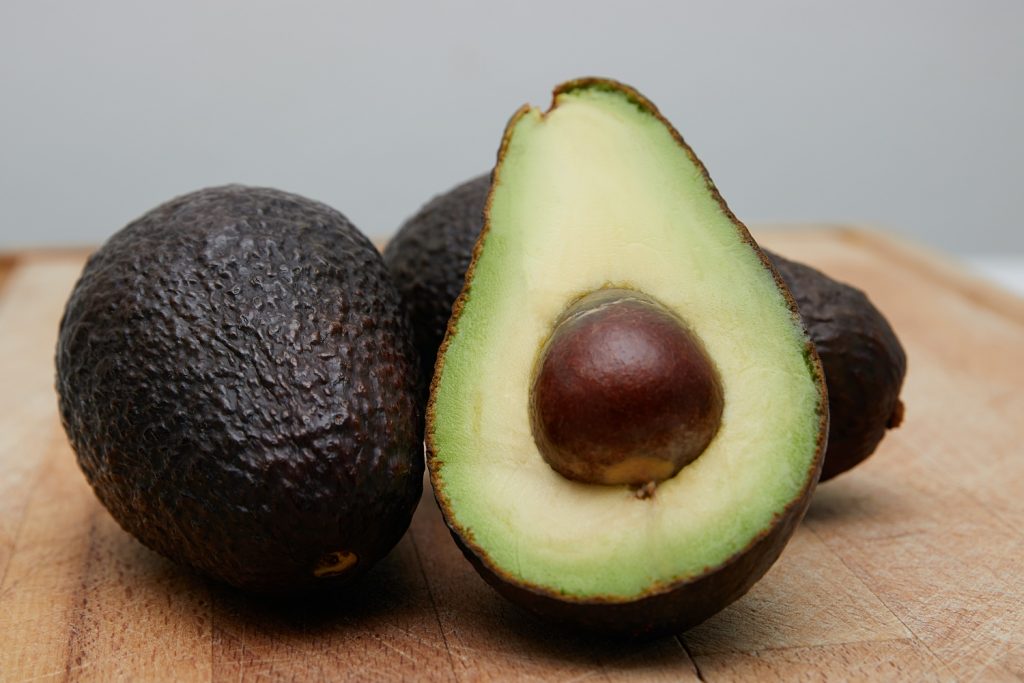
What makes strawberries a healthy treat for birds?
Strawberries are good for birds for many of the same reasons that they’re good for people. For starters, they’re loaded with beneficial nutrients, including vitamin C, which supports immune system function. Birds have high metabolisms. A sick bird that can’t forage for food will soon run out of energy, and if it doesn’t have the energy it needs to fight off an illness, it may die. Strawberries help birds ward off diseases to keep them healthy.
In addition to vitamins, strawberries are an excellent source of bioflavonoids and antioxidants. These potent substances fight free radicals and inflammation, improving vascular tone and cognitive function. Strawberries also help keep birds hydrated. Nuts and seeds have very little moisture content. But, because strawberries are 91% water, they’re the perfect treat for a thirsty bird to snack on during the heat of summer.
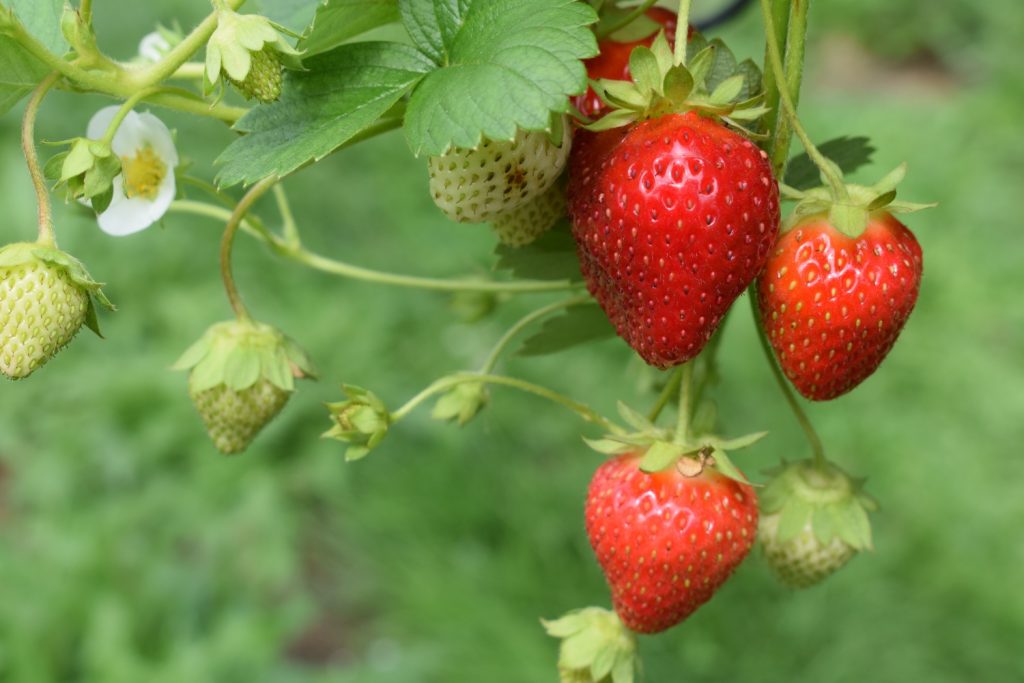
Can birds eat too many strawberries?
Birds are intuitive eaters, eating only what they need and foraging on a variety of foods to ensure all of their nutritional requirements are met. While many birds enjoy eating strawberries, it’s unlikely that they will ever eat too many of them. So there’s no need to try to regulate how many strawberries your backyard birds have access to.
Birds are happy to feed freely on the foods that you leave out for them. But, once they’ve had their fill of one thing, they’ll move on to something else. To keep your neighborhood birds in your backyard longer, be sure to offer a variety of foods, including fresh fruits, nuts, seeds, and dried mealworms, to encourage their natural foraging instinct.
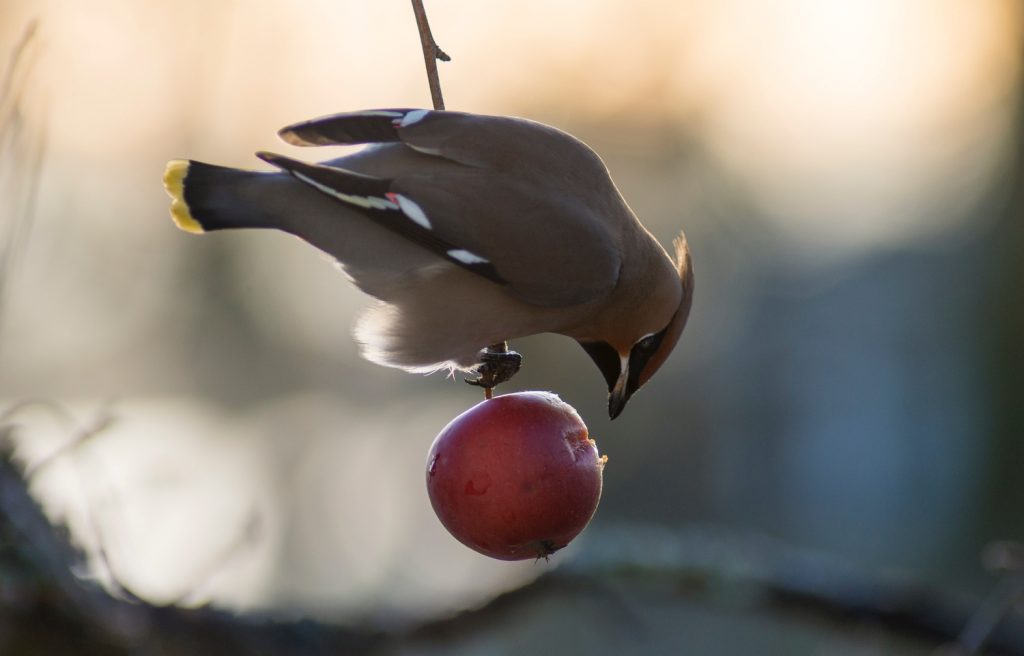
How should you prepare strawberries for wild birds?
Preparing strawberries for your backyard birds is easy. Simply wash the berries off in cool water and pat them dry. Next, use a sharp knife to remove the tops and cut the berries into pieces. Small berries can be left whole, but medium to large berries should be sliced. Birds don’t have teeth, so they’re forced to tear off pieces of their food using their beaks and claws. Small strawberry slices are more manageable, making the process easier for them.
It’s best to feed birds fresh strawberries rather than dehydrated ones. While dehydrated strawberries are safe for birds to consume, dried fruits don’t contain much moisture, so fresh fruits are almost always the better option. It’s safe to feed birds frozen strawberries that have been allowed to warm up to room temperature. However, the freezing process does take a toll on the strawberries’ texture. So you may find your local birds like fresh berries best.
Can birds eat strawberry tops?
Birds can eat all parts of the strawberry plant, including the tops. Strawberry tops give birds some tasty bits of foliage to snack on in between bites of fruit. If you grow your own strawberries, you can even leave flowers and buds from the plants out for wild birds to eat, too. In fact, leaving a tray of trimmings and fruits from your strawberry patch out for the birds may help keep them out of the plants in your garden.
Can birds eat strawberry jams and jellies?
Yes, birds can also eat strawberry preserves — as long as the jams and jellies are made with sugar, not artificial sweeteners. Strawberry preserves are a hit with fruit-loving birds, including hummingbirds, who rely on these sugar-rich treats for quick energy.
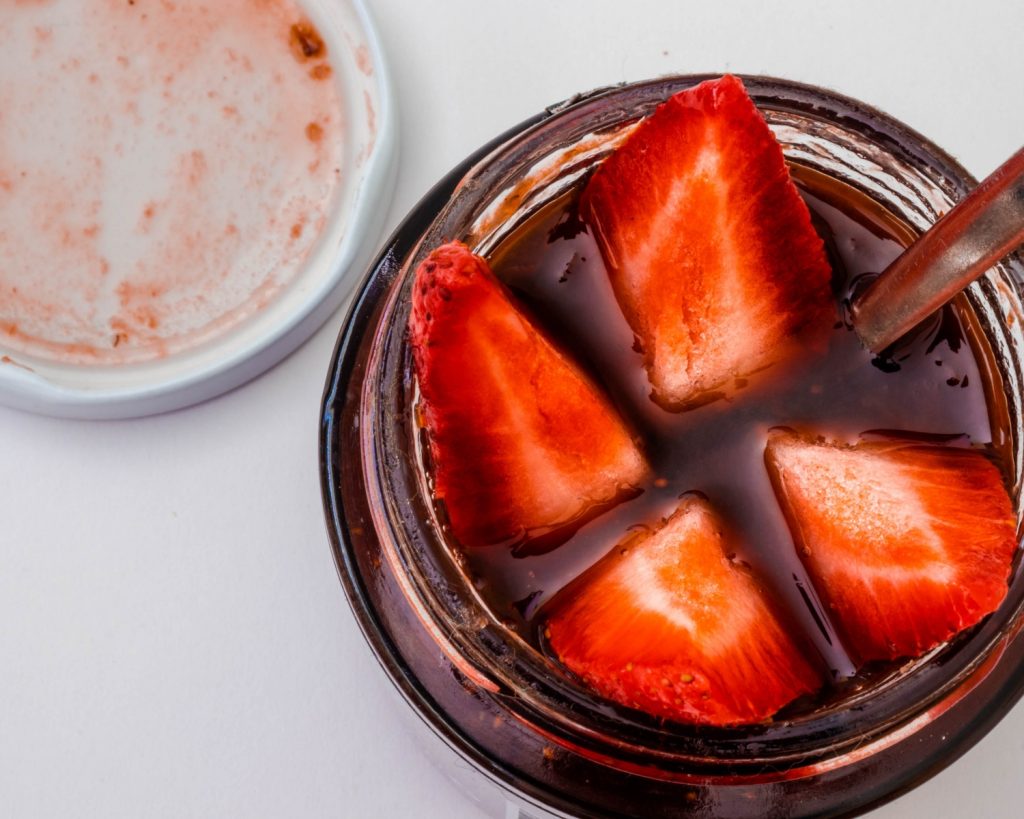
Should you offer strawberries at your bird feeders?
Because fresh strawberries are moist, it’s not a good idea to mix them in with the birdseed at your bird feeders. Not only will this encourage mold to develop, but it will also attract ants, and the birds in your neighborhood may not be so keen to fight off an army of insects if there are other bug-free feeders nearby. Besides, not all birds like berries, so sticking bits of strawberry in their bird seed could result in wastage as they pick out the fruits.
Instead of mixing strawberries in with your birdseed, simply place them in a small dish, like a terracotta plant saucer. Set the strawberries out a few feet away from your bird feeders so they’re easy for the birds to find. Be sure to check the strawberries regularly. If they go bad or start to ferment, throw them onto your compost heap and replace them with fresh ones. Be sure to wash the dish once a week, and/or whenever you replace the berries.
Keeping strawberries a few feet away from your bird feeders also prevents dominant birds from hogging all of the food. Pretty as they may be, some species of backyard birds can be incredibly aggressive. So spreading the food around makes it impossible for one bird to hoard it all for itself.
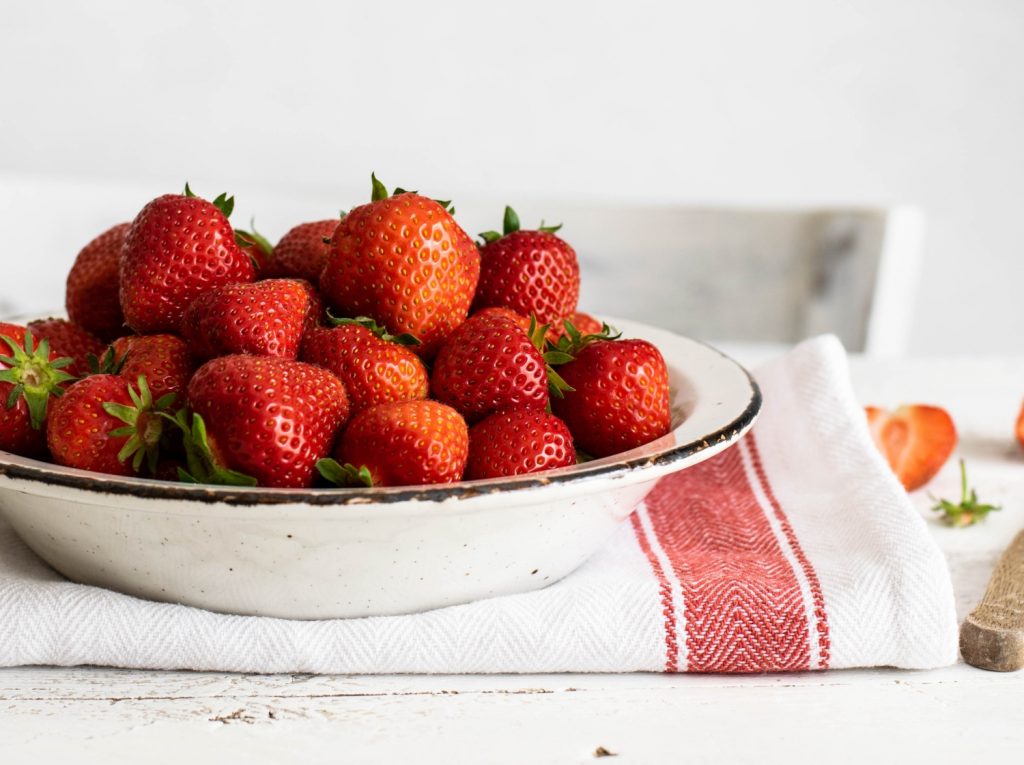
How often should you feed birds strawberries?
You can offer strawberries to your backyard birds whenever you want. However, you’ll probably notice that the birds prefer to eat them during certain times of the year. A bird’s nutritional needs change from season to season, and this plays a huge role in which foods they prefer at a given time.
In fall and winter, birds rely heavily on nuts and seeds. These high-calorie foods give them the energy that they need to generate heat, fly long distances, and build their nests. In spring and summer, birds forage for sugary sweet fruits, which provide them with carbohydrates, as well as some much-needed hydration.
Without humans around to supplement their diets, wild birds can consume only what is available to them in the wild. So to simulate nature, it’s best to feed birds strawberries in midsummer, when strawberries are in season.
Which birds like to eat strawberries?
Some birds are more likely to eat strawberries than others. If you leave a dish of strawberries out in your backyard, the following birds are most likely to pay you a visit as a result:
- Blackbirds
- Bluebirds
- Blue jays
- Catbirds
- Chickadees
- Finches
- Grackles
- Grosbeaks
- Hummingbirds
- Mockingbirds
- Orioles
- Robins
- Tanagers
- Thrashers
- Thrushes
- Titmice
- Waxwings
- Woodpeckers
- Wrens
As you can see, strawberries can be used to attract an array of birds. But not all birds enjoy eating fresh fruits. If you leave sliced strawberries out for the wildlife, you’re not likely to see the following birds nosing around them.
- Cardinals
- Eagles
- Falcons
- Flycatchers
- Hawks
- Owls
- Sparrows
Carnivorous birds, like eagles, hawks, and owls, may snack on bits of vegetation here and there. But, as a rule, they don’t consume much fruit. Additionally, while it’s not out of the realm of possibility to see a cardinal or sparrow at your strawberry feeders, these birds probably won’t make a regular habit of it.
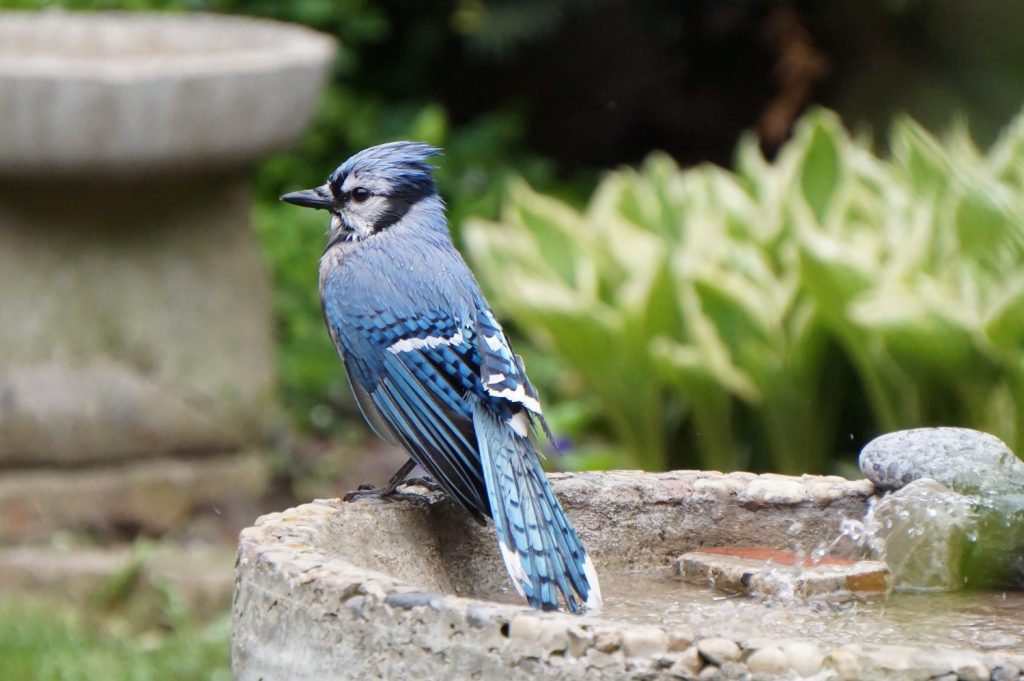
What else can you do to attract more birds to your backyard?
Leaving a dish of fresh strawberries or bananas out in your backyard is a great way to attract birds. But there are other things that you can do to encourage birds to visit your backyard, too. Start by installing a bird bath. Birds need a reliable source of water even more than they need a reliable source of food. Birds also prefer to dwell in spaces that resemble, and feed on plants that are native to, their natural habitat. So consider growing more native pollinator plants in your backyard, to help local birds feel more at home.
So, can birds eat strawberries? The answer is yes! Birds love strawberries, from the berries to the leafy green tops to the sugary canned preserves. If you want to turn your backyard into a birdwatcher’s paradise, consider leaving a dish of strawberries out for your local birds to feast on.
